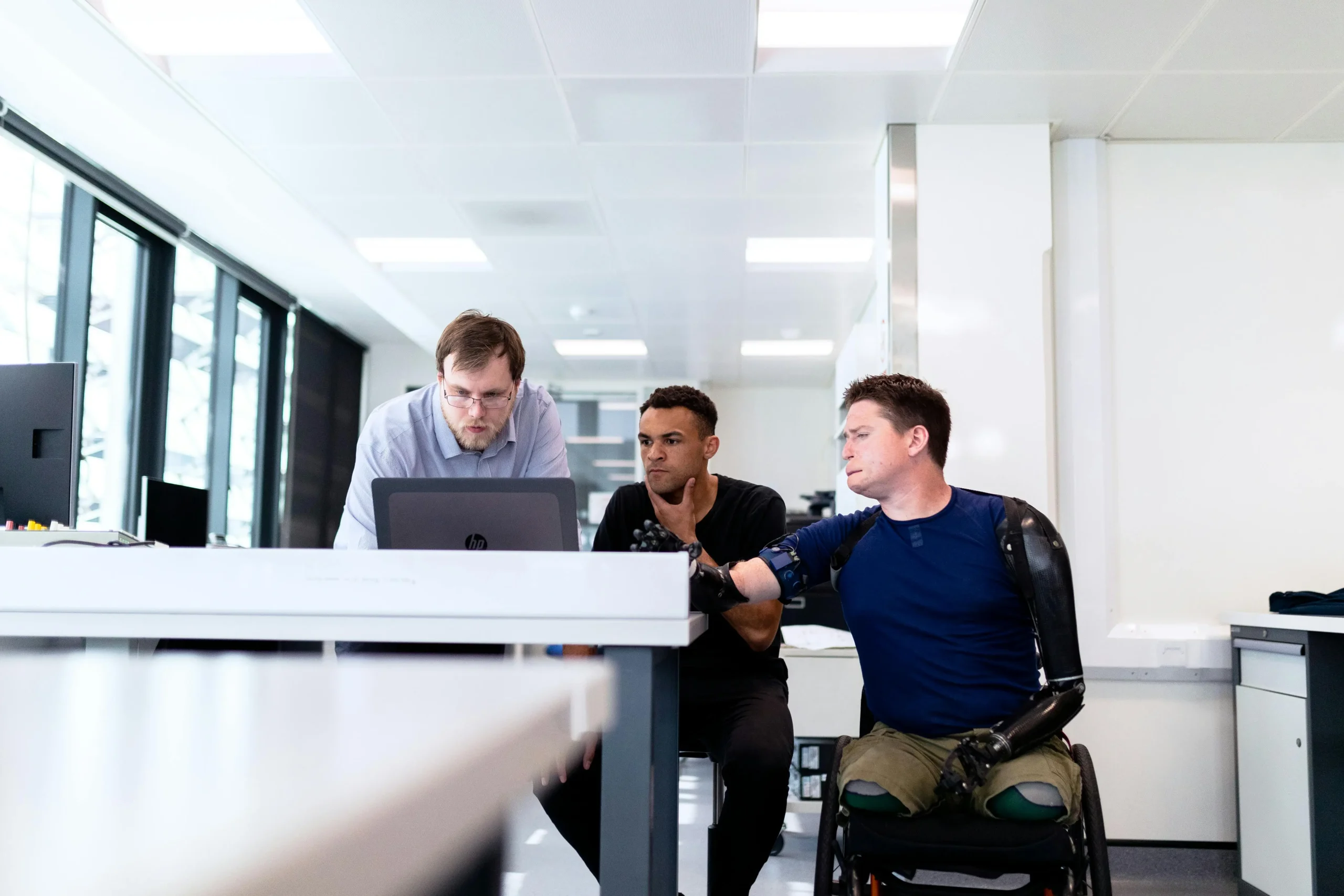The talent shortage is hitting industries worldwide, leaving businesses scrambling to fill critical roles. Yet, amidst this challenge lies an untapped resource that can reshape the future of work: accessible employment. By creating inclusive opportunities, organizations can access a diverse talent pool, improve retention, and drive innovation.
As a famous quote from disability advocate Helen Keller goes, “Alone we can do so little; together we can do so much.” Accessible employment embodies this spirit, bringing businesses and individuals together to achieve remarkable success.
Understanding Accessible Employment
What Is Accessible Employment?
Accessible employment ensures that individuals with disabilities have equal opportunities to participate in the workforce, from hiring to career advancement. This involves removing barriers—be they physical, technological, or attitudinal—that hinder inclusivity.
The Importance of Inclusion in Today’s Workforce
Inclusion isn’t just a moral obligation; it’s a strategic advantage. Studies show that companies that prioritize diversity and accessibility outperform their peers in innovation and financial returns.
Common Barriers to Accessible Employment for People with Disabilities
From inaccessible offices to biased hiring practices, barriers abound. Addressing these obstacles is crucial to unlocking the full potential of the workforce.
The Benefits of Accessible Employment
Access to a Diverse Talent Pool
Millions of capable, skilled individuals are eager to work but often overlooked due to accessibility gaps. Embracing accessible employment allows businesses to tap into this underutilized talent.
Enhanced Accessible Employment Retention and Satisfaction
Inclusive workplaces foster loyalty and satisfaction. Employees who feel valued are more likely to stay, reducing turnover costs.
Financial Benefits for Businesses
Tax Incentives for Hiring People with Disabilities
Governments worldwide offer tax credits and subsidies to organizations that prioritize accessibility.
Boosting Productivity and Innovation
Diverse teams solve problems faster and drive creative solutions, directly impacting the bottom line.
Strengthening Company Culture and Reputation
An accessible workplace sends a clear message: this is a company that values all individuals. This commitment enhances employer branding and attracts top-tier talent.
How to Make Employment Accessible
Start with Awareness and Training
Educating leadership and staff about the importance of accessibility creates a foundation for meaningful change.
Designing Inclusive Recruitment Processes
Ensure job postings are accessible, and implement unbiased interview techniques to welcome all applicants.
Adapting Workspaces for Accessible Employment
Physical Accessible Employment Adjustments
Install ramps, elevators, and ergonomic furniture to accommodate varying needs.
Technology for Accessible Employment
From screen readers to voice recognition software, tech solutions can bridge gaps effortlessly.
Providing Reasonable Accommodations
Flexibility is key. This might include adjusted schedules or specialized equipment, tailored to individual needs.
Leveraging Assistive Technology
Modern tools, like text-to-speech apps and adaptive keyboards, empower employees to excel in their roles.
Real-Life Success Stories
Companies Thriving with Accessible Employment
Companies like Microsoft and Walgreens have embraced accessible hiring, reaping rewards in innovation and employee morale.
Employee Testimonials: Voices of Change
Employees with disabilities often share transformative stories of empowerment when given equal opportunities.
Addressing Misconceptions About Accessible Employment
Debunking Myths About Costs
Contrary to popular belief, most accessibility adjustments are affordable—and many are free.
Breaking Stereotypes About Productivity
Studies consistently show that employees with disabilities perform as well as, if not better than, their peers.
The Role of Policies and Legislation
Understanding Employment Laws and Rights
Familiarity with laws like the Americans with Disabilities Act (ADA) ensures compliance and fairness.
Global Efforts to Promote Accessibility
From Europe’s Accessibility Act to Canada’s Accessible Canada Act, global movements champion workplace inclusion.
Steps to Implement Accessible Employment in Your Organization
Conducting Accessible Employment Audits
Evaluate your workplace to identify and address gaps in accessibility.
Partnering with Advocacy Groups and Experts
Collaboration with organizations like Disabilitycan provide valuable insights and resources.
Tracking Progress and Measuring Impact
Monitor outcomes to ensure accessibility efforts are effective and evolving.
Conclusion
Accessible employment isn’t just a solution to the talent shortage—it’s a gateway to innovation, inclusion, and success. By breaking down barriers, businesses can thrive while fostering a more equitable society.
As you step forward, remember: the future of work belongs to those who embrace diversity and accessibility.
FAQs About Accessible Employment
- What does accessible employment mean?
Ensuring equal opportunities for individuals with disabilities in the workplace. - Are there tax benefits for hiring people with disabilities?
Yes, many governments offer tax credits and subsidies. - How can small businesses implement accessible employment?
Start with low-cost adjustments and build partnerships with advocacy groups. - What are some examples of assistive technology in the workplace?
Screen readers, voice recognition software, and adaptive keyboards are common examples. - Does accessible employment only benefit people with disabilities?
No, it enhances company culture, innovation, and profitability. - How do I ensure my hiring process is inclusive?
Use accessible job postings and unbiased interview methods. - What is a reasonable accommodation?
Adjustments like flexible schedules or ergonomic equipment to support employees’ needs. - Are accessibility adjustments expensive?
Most are affordable, and many come with financial incentives. - How can I assess if my company is accessible?
Conduct an accessibility audit with input from employees and experts. - What resources are available to help organizations with accessibility?
Groups like Disabilityand government programs offer support and guidance.













